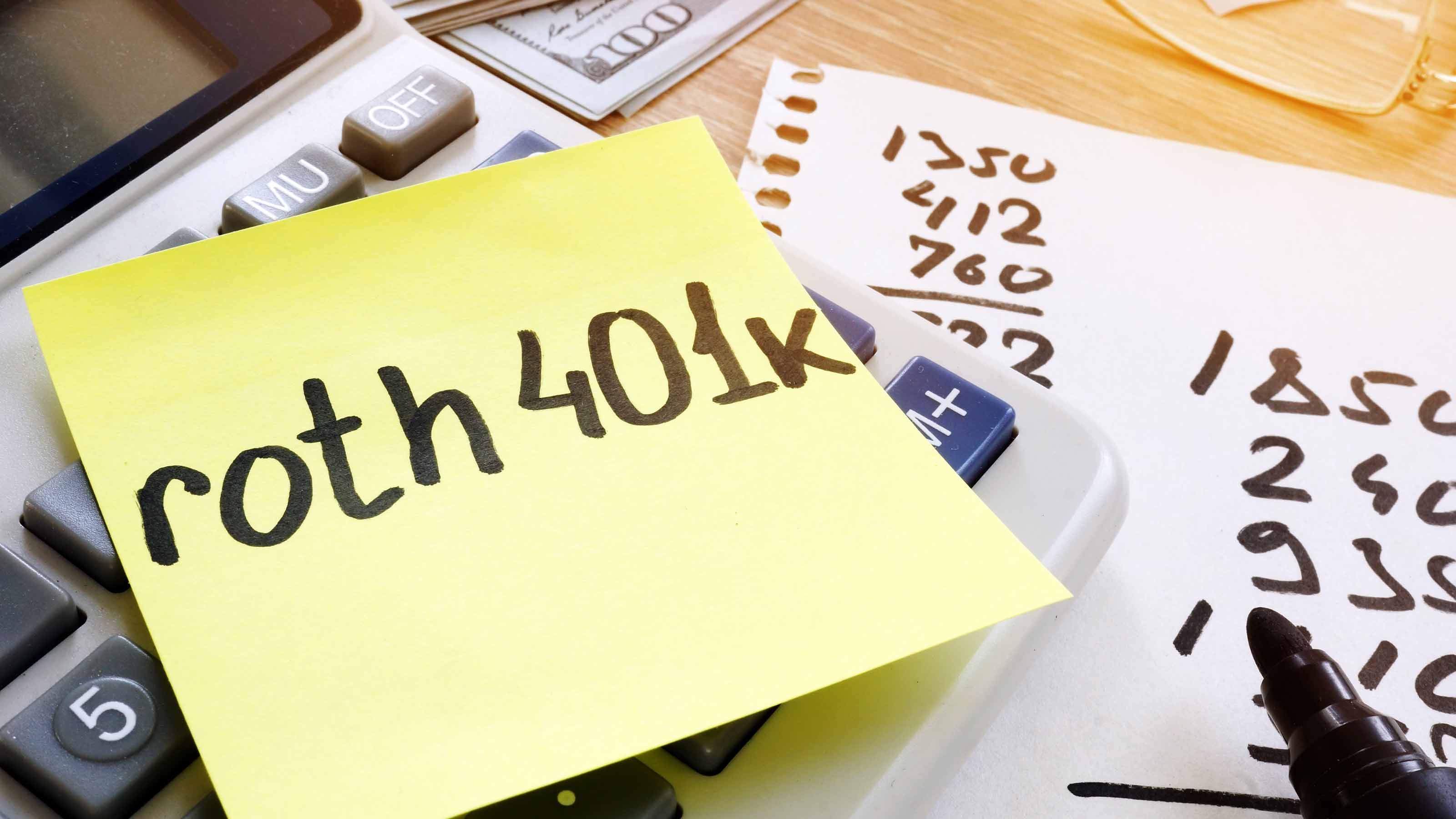How Much Can You Contribute to a Roth 401(k) for 2019?
The Roth 401(k) contribution limit increased by $500 to $19,000 for 2019. Workers 50 and older can save an extra $6,000 for retirement.
More employers are adding a Roth 401(k) option to their retirement plans, which should appeal to workers who anticipate being in a higher tax bracket in retirement. Even better, the maximum contribution limit for a Roth 401(k) has been raised for 2019.
Roth 401(k) Contribution Limits for 2019
The maximum amount workers can contribute to a Roth 401(k) for 2019 is $19,000 if they’re younger than age 50. That’s $500 higher than the 2018 Roth 401(k) contribution limit. Workers age 50 and older can add an extra $6,000 per year in “catch-up” contributions, bringing the total amount to $25,000. (The maximums went up again for 2020.) Contributions generally need to me made by the end of the calendar year.
The Roth 401(k) first became available in 2006, and a majority of companies now offer it to employees, according to the Plan Sponsor Council of America. The Roth 401(k), as the name implies, combines features of the tax-friendly Roth IRA and the traditional 401(k).
From just $107.88 $24.99 for Kiplinger Personal Finance
Become a smarter, better informed investor. Subscribe from just $107.88 $24.99, plus get up to 4 Special Issues

Sign up for Kiplinger’s Free Newsletters
Profit and prosper with the best of expert advice on investing, taxes, retirement, personal finance and more - straight to your e-mail.
Profit and prosper with the best of expert advice - straight to your e-mail.
A Roth 401(k) vs. a Roth IRA and a Traditional 401(k)
As with a Roth IRA, you make after-tax contributions to a Roth 401(k). This won’t lower your tax bill now, but it will provide you with income in retirement that is free from taxes. You can make withdrawals from a Roth 401(k) tax-free, and without incurring a 10% early-withdrawal penalty, once you’ve turned age 59 1/2 and have had the account open for at least five years. (If you retire after holding a Roth 401(k) for only two years, for example, the money must sit for three more years to be fully tax-free, even if you own an older Roth 401(k) account from a previous employer that meets the five-year test.)
And as with a traditional 401(k), there are no income limitations with the Roth 401(k), making it an attractive option for high-earners whose salaries might disqualify them from contributing to an IRA. You can also sock away thousands of dollars more each year with a Roth 401(k) or a traditional 401(k) than you can with an IRA alone. The annual contribution limit for a Roth IRA is $6,000 for 2019, or $7,000 if you’re age 50 or older. You’ll be obligated to take required minimum distributions from a traditional 401(k) and a Roth 401(k) once you reach age 70 1/2. However, you can avoid RMDs from a Roth 401(k) by rolling over the money into a Roth IRA, which doesn't require minimum distributions.
How Much Should You Save in a Roth 401(k)?
Many employers match employees’ 401(k) contributions up to a certain percentage of salary. Note that any employer contributions to a Roth 401(k) will be made pretax and will grow tax-deferred alongside your own Roth contributions. When you withdraw money, you will owe income tax on the employer match.
Melissa Brennan, a certified financial planner in Dallas, recommends that people save at least 15% of their income for retirement, including any employer match. If your employer contributes, say, 2%, then you would need to save an additional 13%.
“Every year, add another percentage point until the employee deferrals and the employer contributions reach a total of 15% of gross income,” Brennan says. So if you’re saving 3% now, bump that up to 4% next year, 5% the year after and so on.
The Roth 401(k) can help you build a sizable nest egg. For example, a 25-year-old who contributes $5,500 a year to a Roth 401(k) and has an annual return of 6% will accrue a nest egg of $902,262 at age 65. If instead he or she is in the 22% tax bracket and saves the same amount in a taxable account, assuming the same return, the balance would amount to $643,500 after 40 years.
Is a Roth 401(k) Right for You?
Stuart Ritter, a certified financial planner with T. Rowe Price, says Roth 401(k) plans are most beneficial for workers who don’t anticipate that their tax bracket will decrease in retirement. This “usually includes younger people who expect their income to increase as they get older,” Ritter says.
Brennan also recommends a Roth 401(k) for younger workers. If and when income increases substantially and their tax bracket is higher than it will likely be in retirement, it might make sense at that point to switch to pretax deferrals in a regular 401(k), she says.
(Note: If you invest in both a Roth 401(k) and a traditional 401(k), the total amount of money you can contribute to both plans can’t exceed the annual maximum for your age, either $19,000 or $25,000 for 2019. If you do exceed it, the IRS might hit you with a 6% excessive-contribution penalty.)
Roth 401(k) Retirement Savings Tips
Advice for maximizing your Roth 401(k) account:
- Max out your contributions. For each year that you’re able, aim to hit the $19,000 limit.
- Once you turn 50, add another $6,000 to that limit annually while you continue to work.
- If your employer offers to match your contributions up to a certain amount, be sure to invest at least that much in your Roth 401(k) each month. It’s free money, after all.
Profit and prosper with the best of Kiplinger's advice on investing, taxes, retirement, personal finance and much more. Delivered daily. Enter your email in the box and click Sign Me Up.

-
 AI Appliances Aren’t Exciting Buyers…Yet
AI Appliances Aren’t Exciting Buyers…YetThe Kiplinger Letter Artificial intelligence is being embedded into all sorts of appliances. Now sellers need to get customers to care about AI-powered laundry.
-
 Ask the Editor: IRAs, 401(k)s and RMDs
Ask the Editor: IRAs, 401(k)s and RMDsAsk the Editor In this week's Ask the Editor Q&A, Joy Taylor answers questions on IRAs, 401(k)s and required minimum distributions
-
 Got $100 to Gamble? These Penny Stocks Could Be Worth the Ride
Got $100 to Gamble? These Penny Stocks Could Be Worth the RideVolatile penny stocks are high-risk plays with potentially high rewards. If you have $100 you can afford to lose, these three names are worth a look.
-
 457 Plan Contribution Limits for 2026
457 Plan Contribution Limits for 2026Retirement plans There are higher 457 plan contribution limits in 2026. That's good news for state and local government employees.
-
 Medicare Basics: 12 Things You Need to Know
Medicare Basics: 12 Things You Need to KnowMedicare There's Medicare Part A, Part B, Part D, Medigap plans, Medicare Advantage plans and so on. We sort out the confusion about signing up for Medicare — and much more.
-
 The Seven Worst Assets to Leave Your Kids or Grandkids
The Seven Worst Assets to Leave Your Kids or Grandkidsinheritance Leaving these assets to your loved ones may be more trouble than it’s worth. Here's how to avoid adding to their grief after you're gone.
-
 SEP IRA Contribution Limits for 2026
SEP IRA Contribution Limits for 2026SEP IRA A good option for small business owners, SEP IRAs allow individual annual contributions of as much as $70,000 in 2025, and up to $72,000 in 2026.
-
 Roth IRA Contribution Limits for 2026
Roth IRA Contribution Limits for 2026Roth IRAs Roth IRAs allow you to save for retirement with after-tax dollars while you're working, and then withdraw those contributions and earnings tax-free when you retire. Here's a look at 2026 limits and income-based phaseouts.
-
 SIMPLE IRA Contribution Limits for 2026
SIMPLE IRA Contribution Limits for 2026simple IRA For 2026, the SIMPLE IRA contribution limit rises to $17,000, with a $4,000 catch-up for those 50 and over, totaling $21,000.
-
 457 Contribution Limits for 2024
457 Contribution Limits for 2024retirement plans State and local government workers can contribute more to their 457 plans in 2024 than in 2023.
-
 Roth 401(k) Contribution Limits for 2026
Roth 401(k) Contribution Limits for 2026retirement plans The Roth 401(k) contribution limit for 2026 has increased, and workers who are 50 and older can save even more.

